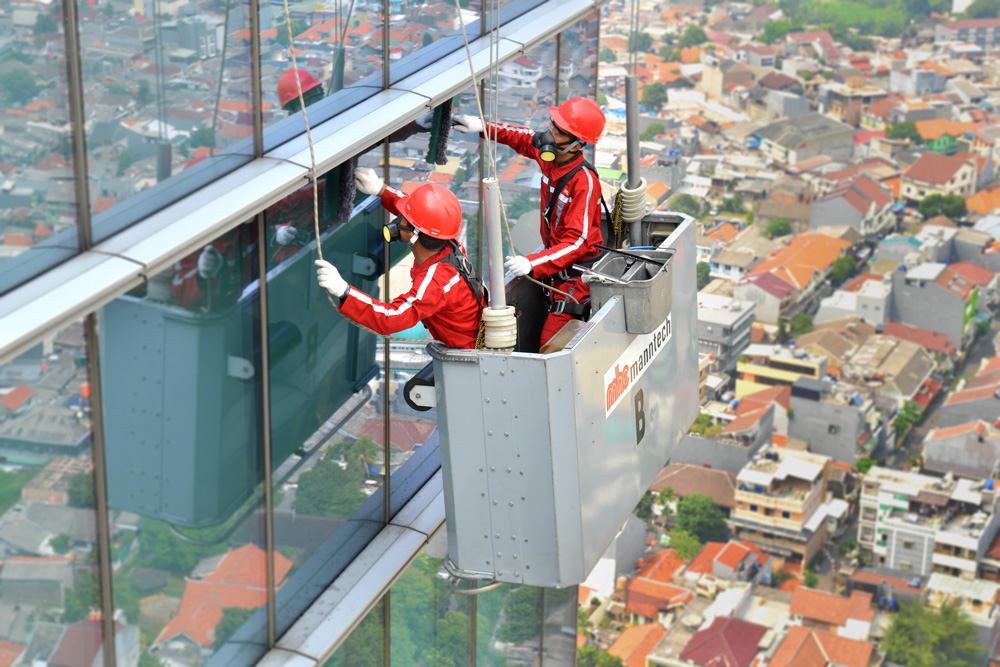Workplace accident prevention is a crucial part of ensuring employee safety and maintaining smooth company operations. Workplace accidents not only cause physical and psychological harm to employees but also lead to financial losses, decreased productivity, and damage to the company’s reputation.
That’s why it is vital for every company to understand the causes of accidents and how to overcome them. Let’s take a closer look.
What Are the Causes of Workplace Accidents?
Before discussing prevention strategies, it is important to understand the common causes of workplace accidents. These factors may come from the work environment, employee behavior, or a lack of management supervision.
Some common causes of workplace accidents include:
-
Lack of adequate safety training for both new and existing employees.
-
Hazardous work environments, such as poor lighting, slippery floors, or insufficient ventilation.
-
Improper or lack of use of Personal Protective Equipment (PPE).
-
Fatigue and work-related stress, leading to reduced focus or mistakes.
-
Lack of supervision or regular evaluation of workplace safety systems.
-
Human error, such as rushing tasks or ignoring safety procedures.
-
Damaged or substandard work equipment.
Once these causes are identified, the next step is to implement systematic and comprehensive prevention strategies.
Read Also: 7 Factors That Influence Employee Retention
How to Effectively Prevent Workplace Accidents?
To create a safe work environment, companies must implement continuous prevention efforts. Based on Ministry of Manpower Regulation No. 05/2021, here are the main strategies for effective accident prevention:
1. Establish a Clear Workplace Safety Policy
-
Develop written safety policies that are easy for all employees to understand.
-
Policies should include safe work procedures, proper PPE usage, and emergency handling measures.
-
Update policies regularly in line with technological advancements and regulatory changes.
2. Provide Regular Safety Training for Employees
-
Safety training should be conducted regularly for both new and long-serving employees.
-
Training topics should cover hazard identification, PPE usage, and accident response procedures.
-
Certifications can be used to ensure employee competency.
3. Provide and Enforce the Use of Personal Protective Equipment (PPE)
-
Supply PPE according to the job type, such as helmets, gloves, safety shoes, masks, and protective glasses.
-
Ensure employees know how to use PPE correctly and make its use mandatory during work.
-
Conduct regular inspections to ensure PPE remains in good condition.
4. Conduct Regular Safety Inspections and Audits
-
Periodic safety audits should be conducted to evaluate compliance with safety policies and procedures.
-
Inspections help detect potential hazards before they cause accidents.
-
Audit results should lead to improvements or updates to Standard Operating Procedures (SOPs).
Read Also: How to Calculate Employee Workload Accurately
5. Manage Workload and Provide Adequate Rest
-
Excessive workloads without sufficient rest can cause fatigue and increase accident risks.
-
Schedule work shifts proportionally and provide enough rest periods to maintain focus and health.
-
Pay attention to employee mental well-being to prevent stress and burnout.
6. Install Warning Signs and Safety Labels in Work Areas
-
Place warning signs in hazardous areas such as chemical storage, slippery floors, or machine rooms.
-
Use standard colors and symbols that are easily understood by all employees.
-
Ensure signs remain visible and unobstructed by equipment or materials.
7. Build a Strong Workplace Safety Culture
-
Encourage all company levels, from management to field workers, to actively uphold safety.
-
Launch internal campaigns or recognition programs for employees who consistently apply safety practice.
-
Involve teams in drafting SOPs and reporting workplace hazards.
8. Report and Analyze Workplace Incidents
-
All incidents, big or small, must be reported and documented thoroughly.
-
Conduct root cause analysis (RCA) to prevent recurrence.
-
Involve employees in investigations to increase safety awareness.
Read Also: 9 Ways to Manage Workplace Stress for Better Productivity
9. Provide Adequate Health and Safety Facilities
-
Provide first aid kits, fire extinguishers (APAR), and quick access to medical facilities.
-
Ensure employees know the location and use of emergency facilities.
-
Conduct regular evacuation and emergency response drills.
Example of a Company Implementing Workplace Accident Prevention
One example of effective workplace accident prevention in Indonesia is JOB Tomori (Joint Operating Body Pertamina–Medco E&P Tomori Sulawesi).
JOB Tomori received the Zero Accident Award 2024 from the Ministry of Manpower of the Republic of Indonesia (KEMNAKER RI).
The award was given for successfully running oil and gas production operations at the Central Processing Plant (CPP) Senoro, Banggai Regency, Central Sulawesi, without a single workplace accident.
Details:
1. Company Profile & Implementation
Company: Joint Operating Body Pertamina–Medco E&P Tomori Sulawesi (JOB Tomori)
Location: Central Processing Plant (CPP) Senoro, Banggai Regency, Central Sulawesi
2. Prevention Efforts
-
Implemented strict Health, Safety, and Environment (HSE) standards, with strong adherence to safety procedures including HSE Golden Rules: obey, intervene, and care.
-
Regular safety training for all employees and contractors.
-
Internal audits and periodic inspections to ensure consistent safety compliance.
3. Achievements & Impact
-
Awarded the Zero Accident Award 2024 by Minister Ida Fauziah on September 13, 2024.
-
Recorded 10,261,569 working hours without accidents from May 31, 2014, to December 31, 2023.
4. Positive Impacts
-
Prevented workplace incidents and enhanced employee safety.
-
Built a strong and sustainable workplace safety culture.
-
Strengthened company reputation as a responsible and compliant operator.
Workplace accident prevention cannot be done instantly; it requires consistent strategies and involvement from all company levels.
By applying the steps above, you can create a safe, healthy, and productive work environment.
If your company wants to implement a work system that is both safe and efficient, using professional outsourcing services such as SOS is the right solution.
Support Workplace Safety with Professional Outsourcing from SOS
SOS serves as a strategic partner for companies by providing well-trained and standardized outsourcing personnel. Our services cover various fields with reliable and experienced workers.
Through an integrated workforce solution, your company can improve productivity while maintaining workplace safety standards.
The SOS team understands operational challenges across industries and is ready to provide solutions tailored to your specific needs.
Contact us now via WhatsApp to consult about the right and efficient outsourcing solutions for your business!





